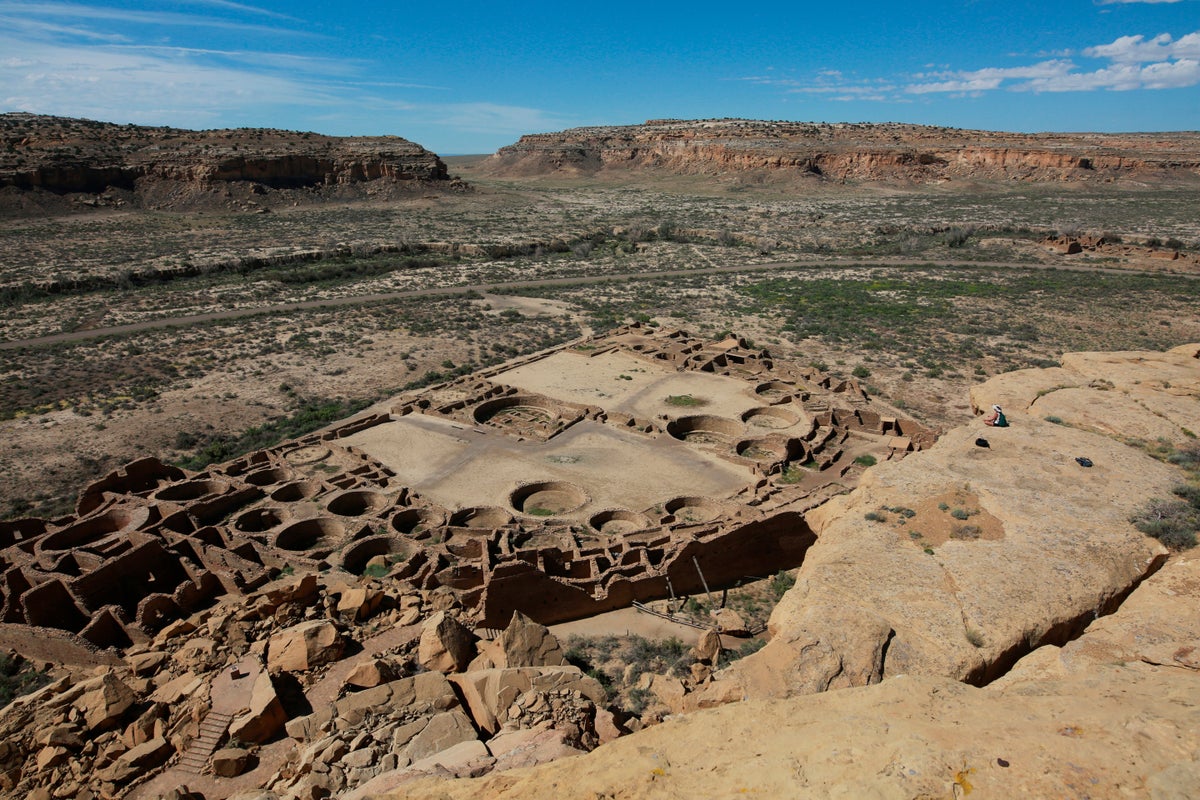
A federal appeals court has sided with environmentalists, ruling that the U.S. government failed to consider the cumulative effects of greenhouse gas emissions that would result from the approval of nearly 200 drilling permits in an area surrounding Chaco Culture National Historical Park.
Home to numerous sites significant to Native American tribes, the region has been a focal point of conflict over energy development that has spanned multiple presidential administrations. Now, environmentalists and some tribal leaders have accused the Biden administration of “rubber-stamping” more drilling.
In a ruling issued Wednesday, a three-judge panel for the 10th U.S. Circuit Court of Appeals found that federal land managers violated the law by not accounting for the direct, indirect and cumulative effects of air pollution from oil and gas drilling.
The court also put on hold the approval of additional drilling permits pending a decision from a lower court.
Kyle Tisdel, a senior attorney with the Western Environmental Law Center, accused the Bureau of Land Management of prioritizing oil and gas extraction at the expense of those who live in northwestern New Mexico, including many Navajo communities.
“Frontline Diné communities and their allies were vindicated today in a step toward environmental justice. We will continue to demand justice, and that their water, health and the climate stop being sacrificed to big oil profits,” Tisdel said in a statement.
Environmentalists have long complained about pollution from increased drilling, but the fight took on new urgency when Native American tribes began raising concerns that a spider web of drill pads, roads, processing stations and other infrastructure was compromising culturally significant sites beyond Chaco park’s boundaries.
The Bureau of Land Management had an informal process of not leasing land within 10 miles (16 kilometers) of Chaco park to address those concerns.
During the Obama administration, the Bureau of Indian Affairs for the first time joined federal land managers in planning how to manage resources. Following a visit by then-Interior Secretary David Bernhardt during the Trump administration, oil and gas leasing within a certain distance of the park was put on hold.
Now, the U.S. Interior Department is considering formalizing the 10-mile buffer around the park, putting off limits to future development of more than 507 square miles (1,310 square kilometers) of federal mineral holdings.
As part of the effort, Interior Secretary Deb Haaland — a member of Laguna Pueblo and the first Native American to lead a U.S. Cabinet agency — wants to create a system for including tribal perspectives and values when land management decisions are made.
She first detailed the steps her agency would be taking during a visit to Chaco park in November 2021. That process is ongoing.
Much of the land surrounding the park belongs to the Navajo Nation or is owned by individual Navajos. While the federal government's planned 20-year withdrawal would not affect tribal lands, the Navajo Nation and allottees have expressed concerns about being landlocked and losing out on leasing revenue and royalties.
There are about 23,000 active oil and gas wells in the San Juan Basin in northwestern New Mexico. The BLM is required to approve an application for permit to drill before a developer can begin work. As part of that process, the agency typically prepares a site-specific environmental assessment to determine whether the project will have significant environmental effects.
The judges noted their review was limited to only those applications for permits to drill that had already been approved by the Bureau of Land Management, not pending applications.
While the Bureau of Land Management's analysis of potential impacts to water resources was sufficient, the court noted that the agency was unreasonable in using one year of direct emissions to represent total emissions over the 20-year lifespan of a well.
It will be up to a lower court to decide how the agency can fix deficiencies in the environmental assessments that sparked the legal challenge.







